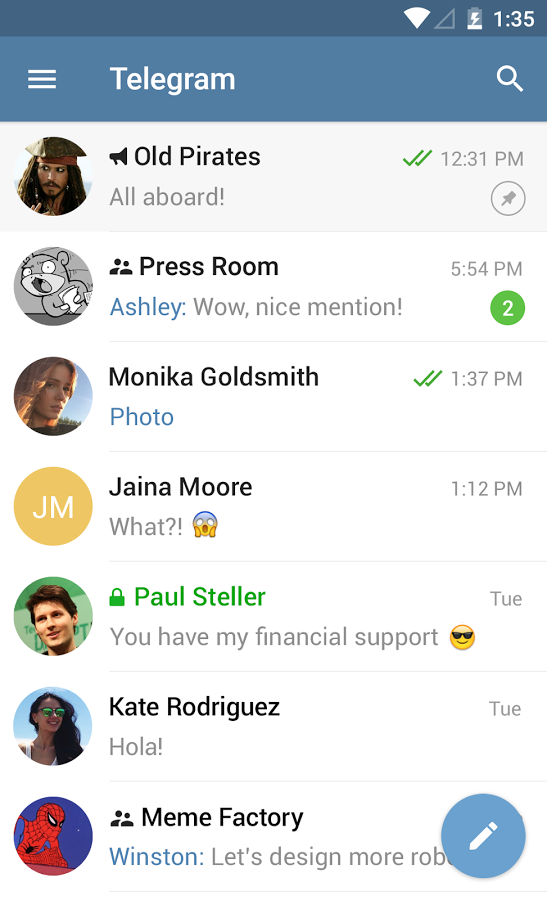
In this paper, we show that (a) Twitter is a rich source for discovering public groups in the different messaging platforms, (b) group URLs from messaging platforms are ephemeral, and (c) the considered messaging platforms expose personally identifiable information, with such leaks being more prevalent on WhatsApp than on Telegram and Discord.Pure instant messaging - simple, fast, secure, and synced across all your devices. Finally, we analyze whether messaging platforms expose personally identifiable information. By monitoring the characteristics of these groups, every day for more than a month, and, furthermore, by joining a subset of 616 groups across the different messaging platforms, we share key insights into the discovery of these groups via Twitter and reveal how these groups change over time. We analyze the content accompanied by group URLs on Twitter, finding interesting differences related to the topics of the groups across the multiple messaging platforms. We search for WhatsApp, Telegram, and Discord group URLs posted on Twitter over a period of 38 days and amass a set of 351K unique group URLs. In this work, we address these gaps by analyzing the messaging platforms' ecosystem through the lens of a popular social media platform-Twitter. We also do not know whether the messaging platforms expose personally identifiable information, and we lack a comprehensive view of the privacy implications of leaks for the users. There is, more importantly, lack of a general understanding of how these (public) groups differ in characteristics and use across the different platforms.

Despite the widespread use of public group chats, there exists no systematic or detailed characterization of these group chats.

Online messaging platforms such as WhatsApp, Telegram, and Discord, each with hundreds of millions of users, are one of the dominant modes of communicating or interacting with one another.


 0 kommentar(er)
0 kommentar(er)
